
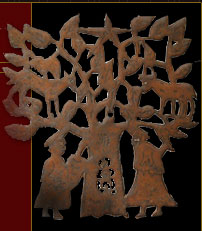
In 1969, Miss Dunham published a second book, Island
Possessed, a more detailed anthropological view of her
association with Haiti. In addition to books, she published
numerous articles, short stories, and stage productions revolving
around her anthropological research of Haiti, the Caribbean,
and Africa. Contrary to the large body of work that Miss Dunham produced on her anthropological studies, she seldom received the same scholarly recognition as other social anthropologists such as Margaret Mead, Franz Boas, or the more widely acknowledged African American anthropologist Zora Neale Hurston. However, Dunham maintained a serious, detailed account of her areas of study. Dances of Haiti is a look inside the significant body of work that she recorded in studying the people of that culture. This research explains symbolism of movements within rituals, and dance as a social, psychological, and religious function. Furthermore, Miss Dunham was one of the first social anthropologists to describe in detail the impact that a researcher could have on his or her environment of study. It is doubtful that her recognition in the field of anthropology will ever be synonymous with that of her impact on choreography and dance, but her considerable amount of published work will no longer allow for her to be ignored. >> Click on each image to see a larger view. << |
|
| Katherine Dunham taking part in vodou ceremony in Haiti, ca. 1980. Photograph by Johnny Sandaire. Missouri Historical Society Photographs and Prints Collection. | 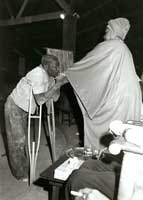 |
Katherine
Dunham burning joss sticks in Chinese temple in Singapore. Straits
Times, July 1957. Missouri Historical Society Photographs
and Prints Collection. |
 |
| Katherine Dunham
on a camel and two others and a guide at the pyramids and Sphinx
in Egypt, 1949. Missouri Historical Society Photographs
and Prints Collection. |
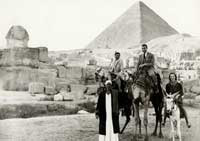 |
| Katherine Dunham talking with women
through window gate in Cuba, 1946–1947. Missouri Historical Society Photographs
and Prints Collection. |
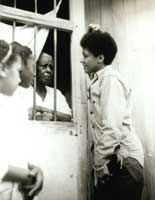 |
| Katherine Dunham in death scene from Rites de Passage, 1943. Missouri Historical Society Photographs and Prints Collection. |
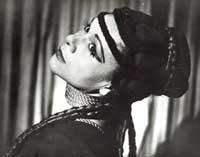 |
| Katherine
Dunham in college, ca. 1930. Missouri Historical Society Photographs and Prints Collection. |
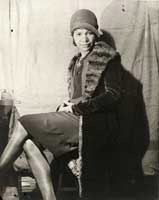 |
Tree of
Life In the 1940s, 55-gallon steel
oil containers came into Haiti carrying fuel reserves for navy
ships. The Haitians collected the emptied and discarded drums
and found ways to put them to good use. Metal workers in the
small town of Croix-des-Bouquets flattened the steel and cut
it into figurative images that usually portrayed deities and
spirits from their local religion (general information published
by the Museum of International Folk Art in Santa Fe to accompany
a steel cutout pictured in its 2001 calendar), ca. 1975. Missouri
Historical Society Collections. |
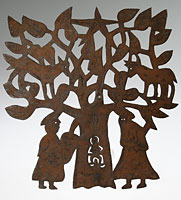 |
| Acrylic painting by Haitian
folk artist Manno Paul, c. 1960.
Gift of Katherine Dunham. Missouri Historical Society Museum Collections. |
 |
| Acrylic painting by Haitian
folk artist Renold Marcelin, c. 1960. Gift of Katherine Dunham. Missouri Historical Society Museum Collections. |
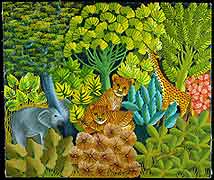 |





